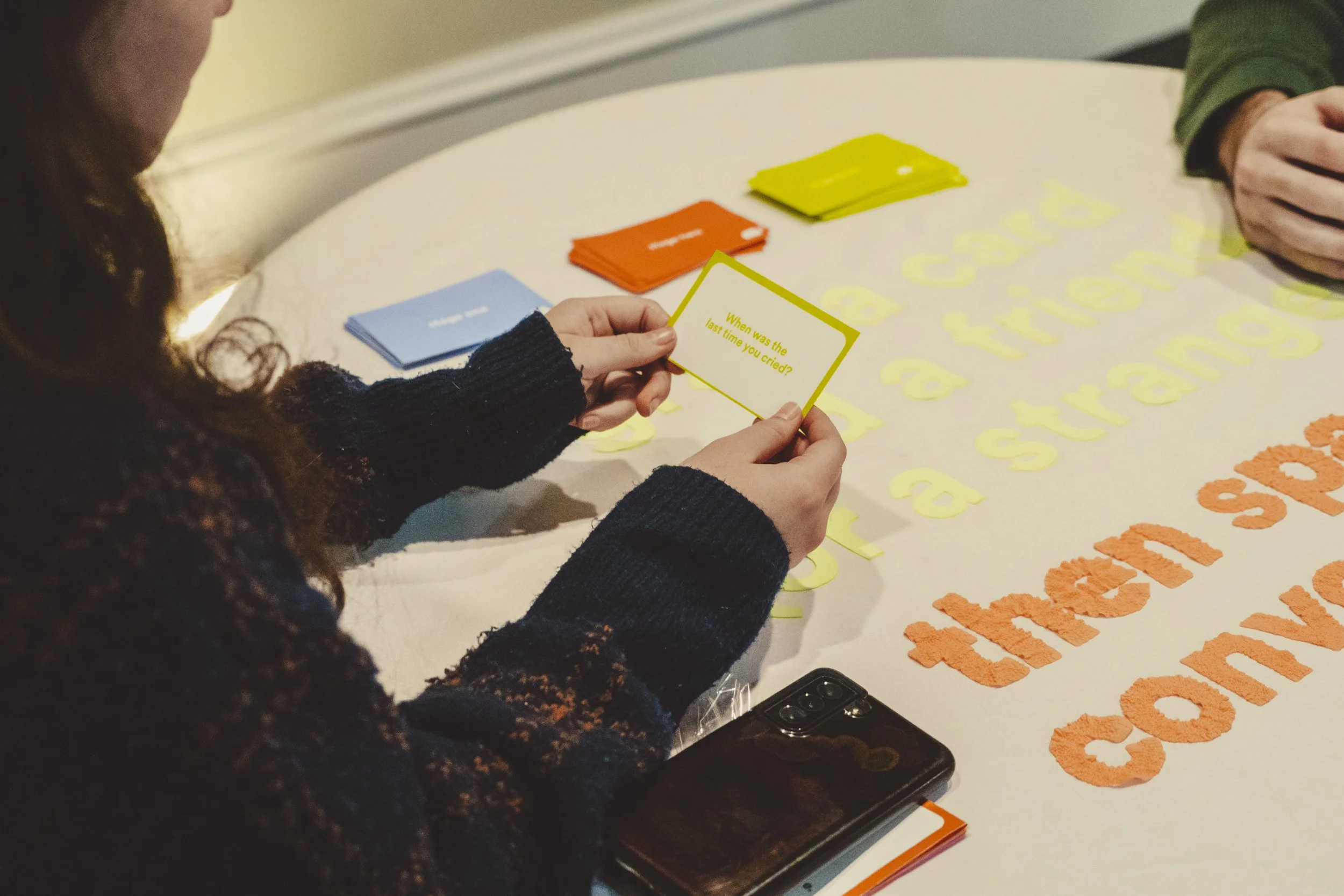The Conversation House
PROJECT TYPE:
Brand Identity | User Experience Design
DELIVERABLES:
Environmental Design, Publication Design, Audio Design
SOFTWARE:
Adobe Illustrator, Adobe InDesign
COLLABORATION:
Anderson University Art + Design Graphic Design Junior Cohort
ROLE:
Co-Project Manager, Branding Team
CAMPAIGN
Held at the Chiquola Studios Gallery in downtown Anderson, SC, The Conversation House provided a space of comfort and vulnerability to Anderson University students. Knowing how difficult it can be to navigate the tension between vulnerability & deep connection with others, the Design for Social Value junior cohort noticed a lack of spaces for authentic and empathetic relationships. With community research and partners, we crafted a three week long social campaign and weekend long experiential and interactive exhibit. Both of these mediums functioned as a community-building initiative among Anderson University’s campus. Small conversation boxes were set up at various high-traffic locations, each with a simple question relating to community and vulnerability. Students submitted their personal, anonymous responses to be shared within exhibition materials.
EXHIBIT
By experiencing the stages of a conversation - listening, asking, checking in, and connecting - attendees were equipped to take authentic connection beyond this space. The exhibit featured a non-linear progression through each stage, prompting the attendees to interact with friends and strangers alike. Whether listening to recordings of stories, asking deep questions on conversation cards, or talking with others in the connection space, The Conversation House provided both a space and experience of thought-provoking and intentional conversation.
Upon arrival, attendees were provided with small gallery guide zines that additionally folded out into a branded poster. With this in hand, guests wrote small introductions for a collaborative sticky-note wall. From there, they put on headphones to listen to various recorded student stories specifically focused on community-building experiences at Anderson University. A table featuring conversation cards allowed for guests to continue conversation through different topic “levels” of depth and impact. Guests could contribute votes in the Check-In portion, voting from 0 to 5 how they were feeling that particular day. Throughout the exhibit, large format posters included previously collected student responses to campaign materials. Finally, attendees could fix they’re own warm beverage and sit among the couches and chairs in the Connect section.























